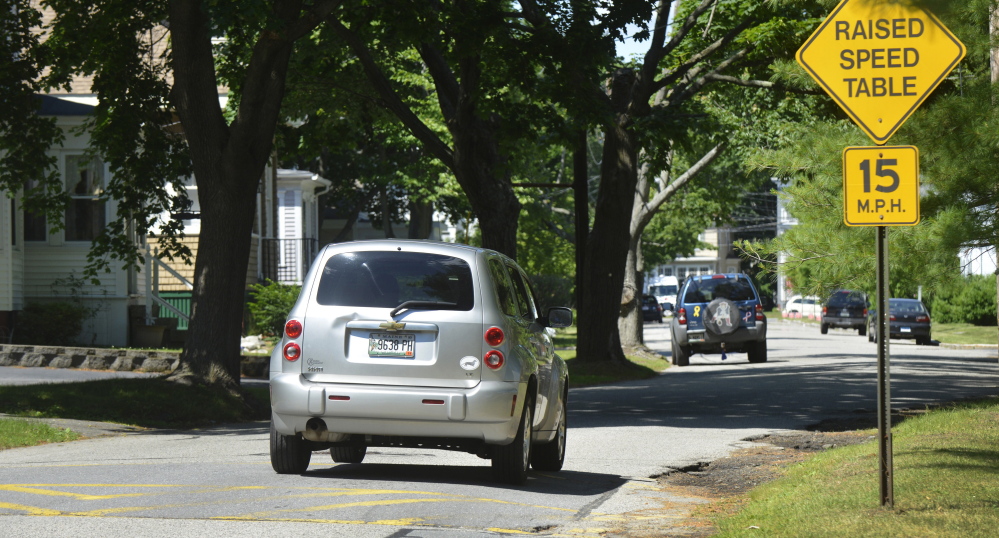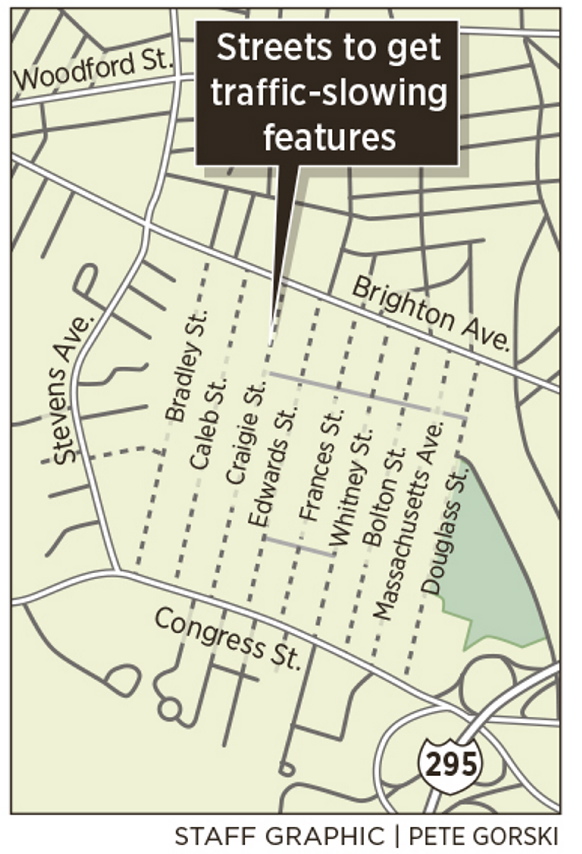Stuck at a traffic light on outer Congress Street and rushing to get across town, drivers in Portland often use side streets as a shortcut to Brighton Avenue.
But speeding through those neighborhoods could soon become a lot harder – if those drivers want to keep their cars intact. And, area residents hope, the neighborhood could soon be safer for the kids and dogs living there.
This summer, the city is planning to install 38 speed humps, five four-way stops, two mini-traffic circles and other traffic-calming devices on 10 streets, from Douglass to Dirigo, to slow down the cut-through cars that have long annoyed residents of the Libbytown and Rosemont neighborhoods.
It’s not the first time the city has tried to address the cut-through issue in that area.
About eight years ago, the city installed speed tables on Massachusetts Avenue and Bolton Street, where most of the complaints came from.
But that only shifted the problem to parallel roads, said Public Services Director Michael Bobinsky.
The city and residents are hoping the effort works this time by effectively flooding the zone with a mix of traffic-slowing devices.
“The main thing is to do it on the whole stretch of streets, because people will figure our which street doesn’t have the (speed hump),” said Zack Barowitz, a member of the Libbytown Neighborhood Association.
Bobinsky said Public Services realized that had to be the strategy, but the funding wasn’t there, until now.
The $330,000 project is among the $3 million in infrastructure improvements that will be paid for through a grant from the federal Economic Development Administration and matching funds from the developer of the planned mixed-use Thompson’s Point complex, Bobinsky said.
Bobinsky said the work is expected to begin before the end of July and wrap up by early fall.
Nine of the streets are long, straight connections between Brighton and Congress, two of the city’s major commuting corridors. Dirigo Street is a shorter road used as a shortcut to and from Stevens Avenue.
Each street, starting with Douglass Street and moving west, will take between two and five days to retrofit with traffic-calming devices.
Sarah Delisle, a member of the Rosemont Neighborhood Association, said the cut-through traffic has been a real issue for residents. The problem has not been that drivers are using the roads to get from Congress Street to Brighton Avenue, but it’s the speed at which they are driving through the neighborhood.
“They’re in a hurry,” she said.
“There’s a lot of families. Kids play in the street,” she said. “That’s why it’s a real concern. People aren’t aware those are neighborhoods.”
Send questions/comments to the editors.






Success. Please wait for the page to reload. If the page does not reload within 5 seconds, please refresh the page.
Enter your email and password to access comments.
Hi, to comment on stories you must . This profile is in addition to your subscription and website login.
Already have a commenting profile? .
Invalid username/password.
Please check your email to confirm and complete your registration.
Only subscribers are eligible to post comments. Please subscribe or login first for digital access. Here’s why.
Use the form below to reset your password. When you've submitted your account email, we will send an email with a reset code.